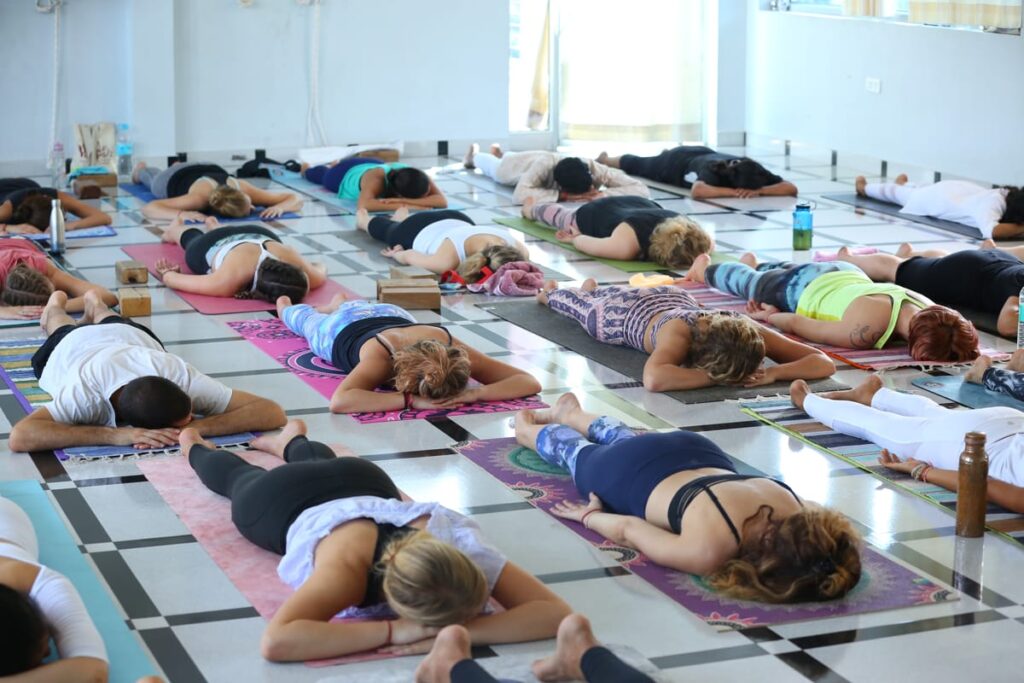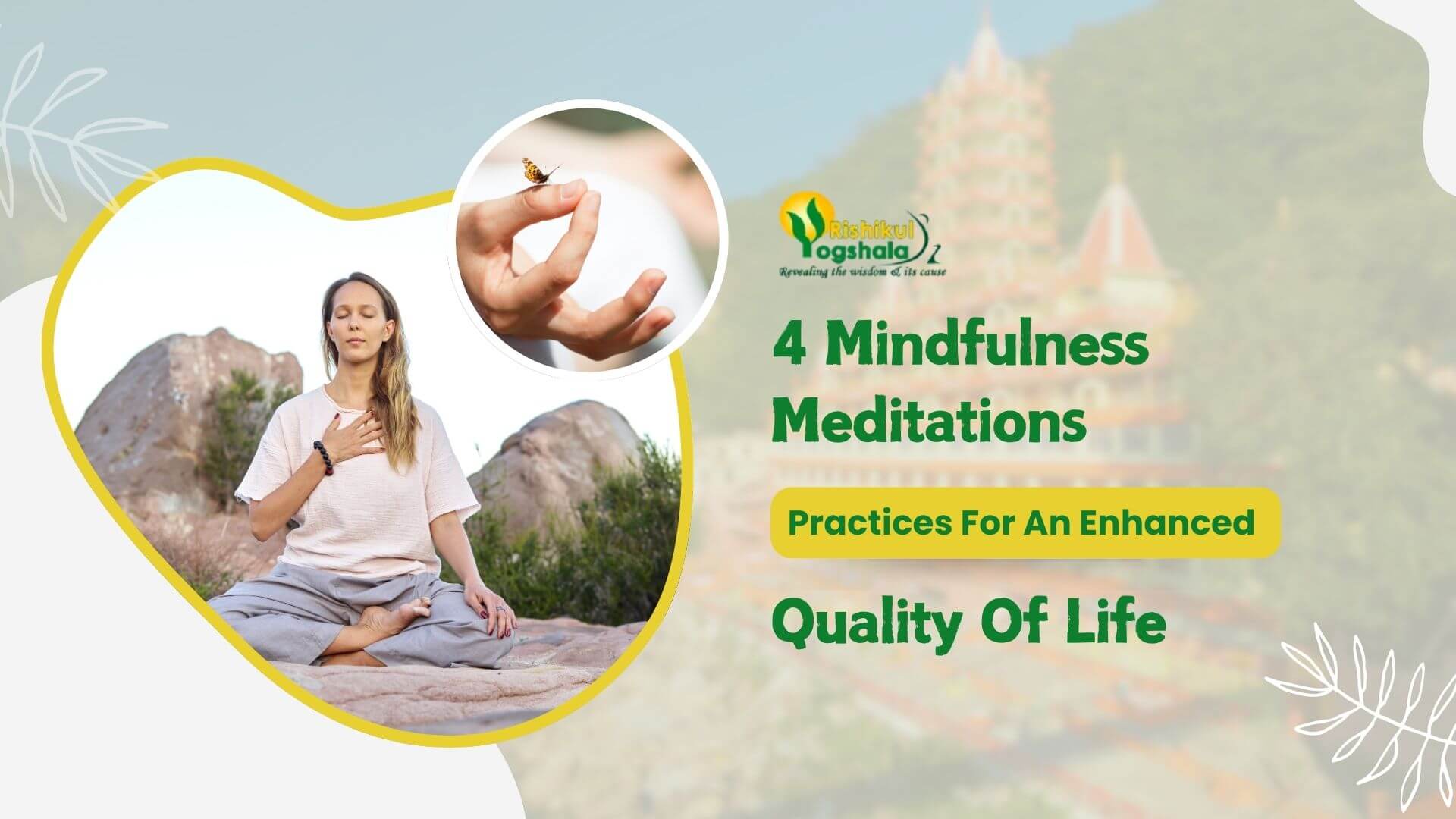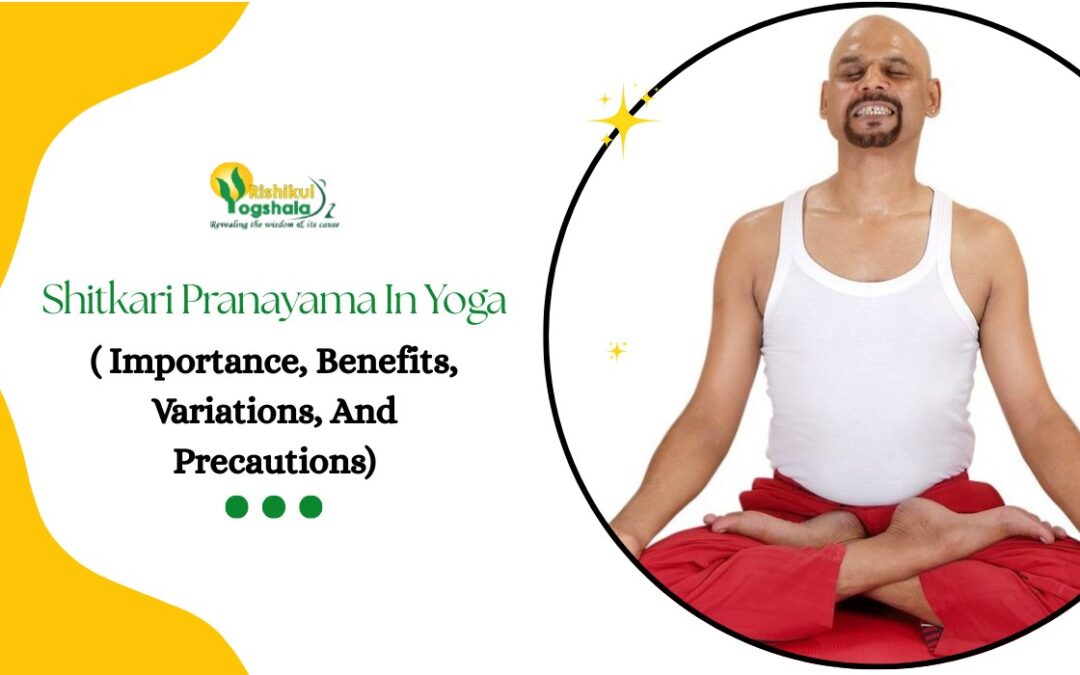Most of us have heard about meditation practice, while others have not. Many of us have practiced it, but a few have mastered it. Mindfulness meditation removes all negative energy in the body and mind.
What is Mindfulness Meditation?
Mindfulness meditation is a state of mind in which the mind is consciously aware of its surroundings, environment, behavior, and present. This conscious condition allows one to cleanse the mind and avoid any confusion, anxiety, or tension that one might be experiencing. This kind of meditation relaxes the mind and the body. There are many benefits of meditation and mindfulness, and one can be amazed to see what just a 20-minute sitting of mindfulness meditation can do!
4 Major Types Of Meditation Practices
One may ask, what are the four mindfulness techniques? The answer to this is:
Body-Scan Meditation
This very type of mindfulness meditation means becoming aware of your body, focusing on one limb at a time. From head to toe, concentrate on your entire body. During this meditation, one may experience varied sensations in the body, such as itching or even tingling. Allow these feelings to pass without thinking about them or rationalizing them! This meditation approach can be used to perform sleep meditation and can help with insomnia and other issues.

Breathing Space Meditation
This is also known as anxiety meditation. This meditation is an excellent treatment for regaining control of your body and mind, especially your emotions. It reduces your desire to escape the circumstance by encouraging thoughtful acceptance of your situation. All you have to do is concentrate on the movement and intensity of your breathing.

Observing Feelings Meditation
This mindfulness meditation practice makes you want to pay attention to your feelings, regardless of what they are, how they feel, or why they occur. All one has to do is see them as they appear and accept them for what they are. Once familiar with these feelings, let them travel through the body until you are free! This helps develop positive emotions such as love and concern for those you care about!
Observing Thought Meditation
This core stress meditation technique helps eliminate negative ideas and replace them with good ones. The approach asks you to let your thoughts enter and go from your mind as they choose, with no attachments attached. One should not feel anything about them, so you distance yourself from them. The most important aspect of this approach is to avoid becoming absorbed in your ideas. After this meditation, one may say goodbye to their erratic blood pressure!

Key Mindfulness Meditation Benefits
1. Decreased Depression
Reduced depression is one of the important benefits of mindfulness. It is very good to help relieve symptoms of depression and also help prevent these symptoms from returning in the future.
2. Reduce Stress
Mindfulness meditation is perfect for reducing stress. It helps lower cortisol levels, reduce stress, and promote emotional well-being!
3. Enhances Emotional Regulation
Regular mindfulness meditation helps to have better control over emotions, leading to improved mood and emotional resilience.
4. Improves Focus and Concentration
By training the mind to stay present, mindfulness meditation enhances cognitive functioning and one’s focus power and also helps to strengthen memory.
5. Promotes Better Sleep
Mindfulness meditation calms the nervous system, reducing insomnia and improving sleep quality.
6. Increase Self-Awareness
Mindfulness Meditation fosters self-reflection and helps individuals to understand their thoughts and behaviours more clearly!
7. Boosts Overall Well-Being
Consistent mindfulness builds inner peace, gratitude, and a more positive outlook on life!

Tips To Do Mindfulness Meditation
Many ask how to do mindfulness meditation, and in this blog, we will elaborate on how to do mindfulness meditation:
- Take your seat. Whatever you’re sitting on—a chair, a meditation cushion, or a park bench—find a spot that gives you a stable, solid seat.
- Notice what your legs are doing. Cross your legs comfortably in front of you. If you’re on a chair, it’s good if the bottoms of your feet are touching the floor.
- Try to straighten but not stiffen your upper body. The spine has natural curvature. Let it be there.
- Let your hands drop onto the top of your legs.
- Drop your chin a little. You may let your eyelids lower. It is compulsory to close your eyes when meditating.
- Be in the pose for a few minutes, relax, and bring your attention to your breath or the sensations in your body
- Feel your breath as it goes in and goes it. Draw your attention to the physical sensation of breathing, the air moving through your nose or mouth, and the rising and falling of your belly.
- There’s no need to block or eliminate thinking. When you feel your mind is wandering, just return your attention to your breath.
- One should practice pausing before making any physical adjustments, such as moving your body or scratching an itch.
- It’s normal to find your mind wandering constantly. Instead of wrestling with or engaging with those thoughts as much, practice observing without reacting.
- When you are ready, then lift your gaze. Take some time and notice any sounds in the environment. Notice how your body feels right now. Pausing for a moment, decide how you’d like to continue with your day.
Read More – Mindfulness Meditation: A Research-Proven Way to Reduce Stress
How to Practice Mindfulness Meditation on the Go
Nearly every task we perform in a day—brushing our teeth, eating lunch, talking with friends, or exercising—can be done more mindfully. When mindful of our actions, we pay more attention to what we are doing. One is tuned into one’s senses, noticing one’s thoughts and emotions. By building mindfulness into your daily life, you can practice mindfulness even when you’re too busy to meditate!
6 Common Mistakes in Mindfulness Meditation
6 Mistakes you may be Making in your Mindfulness Meditation Practice
1. Trying too hard to keep your mind from wandering
There is no need to be hard on yourself if you get distracted while meditating. Follow a dedicated approach that suits you best. Thoughts will come and go; don’t try to shove away these thoughts. Instead, be aware of these thoughts without making any judgments. Whenever you realize you are lost in your thoughts, just return to the object you focus on. Let things go, and stop being hard on yourself.
2. Expecting too much too soon
Once you have built the habit, it is best to stop thinking about the results and start practicing purely because it’s good for you. Try to let go of all expectations and do it daily. When you drop your expectations about results, you get better ones!
3. Being Inconsistent In Your Practice
Inconsistency is another common mistake people make. One should have a bit of consistency in your practice for a calmer mind. The focus should be on maintaining a consistent length, technique, and perfect posture. The quickest and most painless way to form this routine is to meditate first thing in the morning and gradually increase the time spent doing so. Even if you can do it only five minutes a day, make it a point to stick to that schedule, no matter what!
4. Not Giving Enough Time To A Technique
If you’re starting out with meditation, it’s okay to try different meditation techniques. In fact, it is encouraged to do so. Give time to each technique before deciding if it works for you. Try out a technique atleast for a month and then switch to another if it isn’t working for you. At the end of the day, one or more techniques could work well for you and suit you the best.
5. Not Doing Enough Preparation
One needs to prepare to sit down for meditation. Before meditation: Calm your body and breath, make a special effort to keep yourself comfortable, identify a silent place for your practice, and affirm your intention.
During meditation don’t be bothered by distractions, and try to sit or lie still.
6. Practising in a noisy environment
While one can meditate to the sound, new people find it difficult to meditate if there is too much noise in the environment. Meditation is not time-bound or space-bound, and one can meditate whenever one wants. However, try to keep a calm environment.
Conclusion
Thus, one can try mindfulness meditation and find peace in their surroundings. If you want to enhance your yogic journey and become a yoga practitioner, then you can enroll at Rishikul Yogshala Rishikesh and avail their various courses that range from 200 Hrs Yoga TTC In Rishikesh, 300 Hour Yoga Teacher Training in Rishikesh, and 500 Hour Yoga Teacher Training in Rishikesh. Do these comprehensive courses and become a yoga master!












